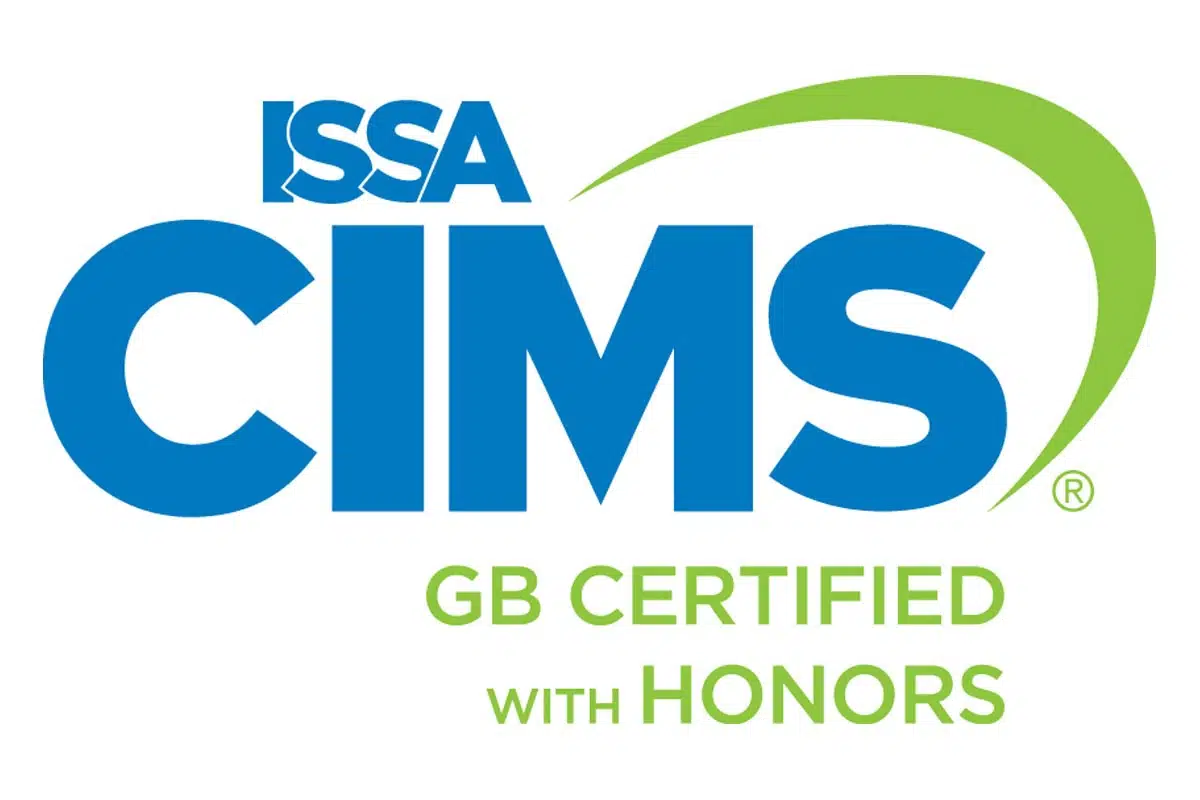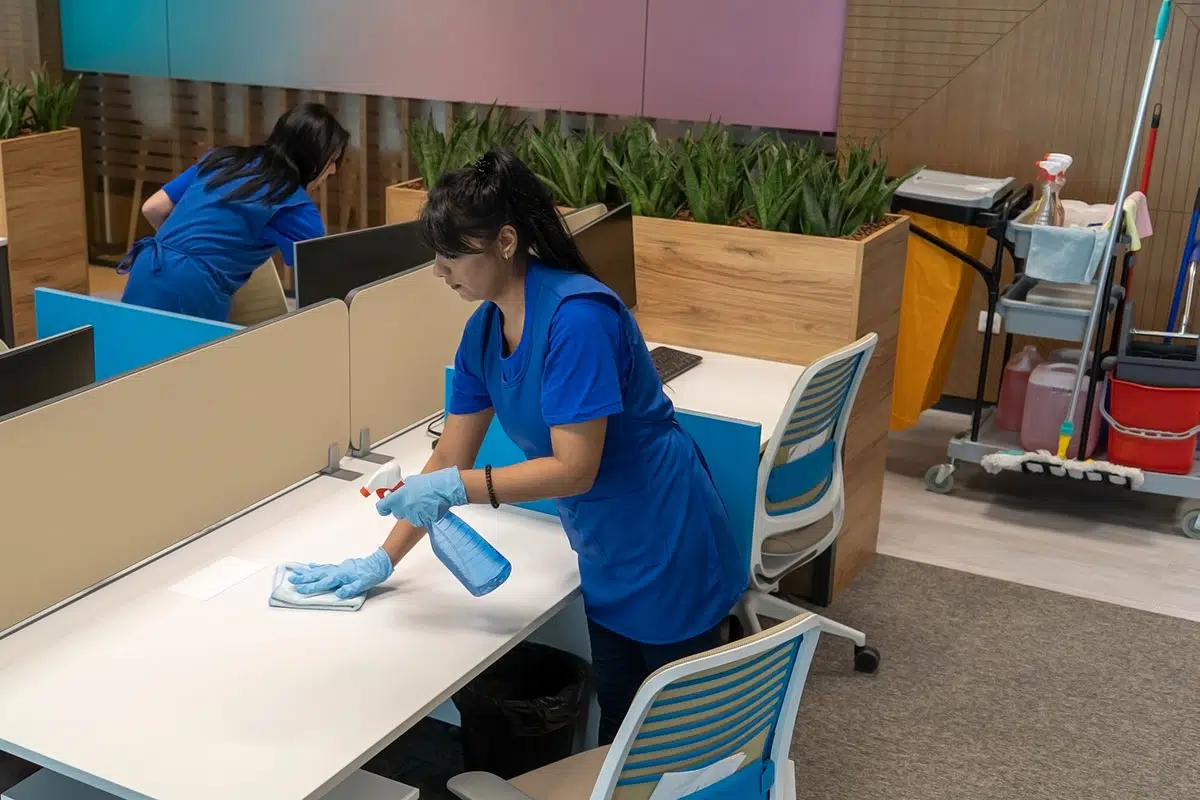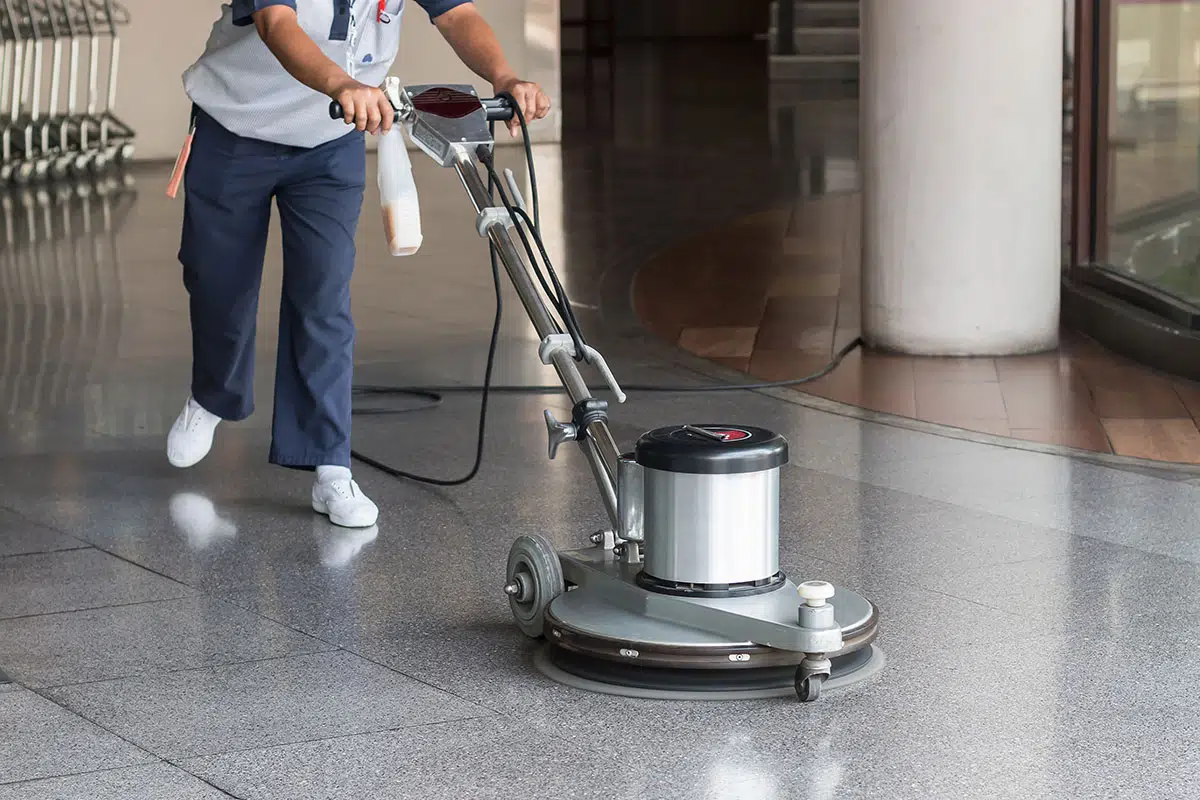A clean workplace can be powerful. Across social media channels, cleaning gurus are amassing followers. “Cleanfluencers,” as they’ve been dubbed, are a thing—and for good reason. Not only can an unclean space be fertile ground for pathogens, clutter and debris can lead to injury. Untidy spaces are also bad for our mental health. In fact, a UCLA study found that clutter releases cortisol—sometimes called the stress hormone—affecting everything from mood to productivity. Conversely, a clean, organized space produces feelings of calm and mastery, associated with the release of dopamine and serotonin. And, given that the average person spends 90,000 hours of their life at work, the power of a clean workplace can’t be underestimated. Experts agree and have offered several tips on the causes of clutter and solutions.
A Clean Workplace Begins at the Entrance
Whether it’s the entrance of campus, a building, or an office, first impressions matter—not only to customers but also to employees.
Of course, a clean, clutter-free entrance tells customers that a business is organized and professional, but it also signals employees’ brains, assuring them that they are entering a place that’s inviting and ripe for their own productivity. Once that tone is set—for those who work in a particular space or visit— it’s easier to maintain throughout the business day.
Declutter the Visual Field
Turns out your visual cortex can only handle so much stuff. Put more scientifically, a study published in the Journal of Neuroscience states, “Multiple stimuli present in the visual field at the same time compete for neural representation . . . limit[ing] processing capacity of the visual system.” So, those boxes stored up in the corner of your cubicle? They’re competing with your laptop and whatever work needs to be done there.
Visual clutter isn’t limited to the 3-D world. A cluttered desktop screen, a barrage of unopened emails, and multiple open windows all compete for your attention. To remedy this, cleaning gurus suggest taking a few minutes throughout the day to clear your desk, close open windows on your computer screen, and move desktop documents to organized files. A best practice is to keep only what’s essential on both your desk and your desktop—and it’s okay if one of your essentials is a photo of your dog.
Common Scents
When a workplace smells bad, it’s not good. And, according to experts, four culprits are most often the cause: food, standing water, dirty carpets, and improper ventilation. With a trained custodial and facilities maintenance staff, alongside clean-up-after-yourself policies, you can easily address all four.
But there’s more to a clean-smelling workplace than the absence of stink. According to an article in Scientific American, “people who worked in the presence of a pleasant-smelling air freshener also reported higher self-efficacy, set higher goals, and were more likely to employ efficient work strategies . . .” If you’ve ever worked next to a wearer of heavy perfume, you know that “pleasant” is the operative word. Often, a fresh-smelling workplace can be achieved simply via deep, regular cleaning. But if your office staff wants to try out additional aromas, subtle, plant-based scents are a good start.
Let There be (Good) Light
Poor lighting can make an office feel dirty, even when it isn’t. Bad lighting also decreases productivity and can even generate feelings of anxiety or depression. Ideally, a workplace will include access to plenty of natural light—which tends to be more visually appealing than artificial light and is also good for the human brain.
If access to natural light is limited, consider the temperature of your office’s lighting. That’s right, the quality and hue of light are measured by degrees in Kelvin (K) on a scale from 1,000 to 10,000—with candlelight around 1,900 and daylight between 5,500 and 6,500. For office spaces, the recommended sweet spot is cool white light—in the 3500K-4000K range. Not only does the right light make things look crisp and clean, but it also proves invigorating and boosts productivity.
A Clean Workplace is Safer
Illness and injury are obviously bad for employees and their families, but they’re also really bad for business. According to the Integrated Benefits Institute, worker illness and injury cost U.S. employers $575 billion a year—roughly 1/3 generated by on-the-job accidents. It’s harder to discern how often colds and flu are acquired at work, but an unsanitary workplace is a breeding ground for germs. Similarly, a buildup of dust, lint, mold, and pollen can create breathing hazards.
Meanwhile, clutter creates conditions for falls, bodily strain, and even fire. Clutter also decreases productivity by creating obstacles and making things hard to find. A well-trained custodial staff can help keep surfaces pathogen-free, while diligent facilities managers ensure that all areas—from entryways to manufacturing floors—are clean and well organized.
Leave it Clean
There’s an old backpacker saying, “Whatever you pack in, pack out.” It’s also apropos when it comes to maintaining a clean, clutter-free workspace. Most often, when it comes to work, this means food. If employees bring lunch, take home the containers. If you were kind enough to bring a pizza for your coworkers, make sure the box is dumped in a trash receptacle—one you know will be emptied that evening. Putting everything back in its place, whether on your desk, in the conference room, or kitchen is also key—ensuring you and your coworkers will arrive the next day to a fresh, uncluttered start. And, again, a well-trained custodial staff, one that knows what stays and what goes at the end of the workday, is key.
According to more than a few psychologists, it’s no accident that the rise of the “cleanfluencer” began during the pandemic—nor that it continues amidst a series of unprecedented economic, health, and social factors. At such times, mastery over what can be controlled—notably within the workplace, where so many hours are spent—becomes vital. Of course, as is the case with any trend, the era of the cleaning guru will eventually end. But the power of a clean workplace? That will remain evergreen.
“Multiple stimuli present in the visual field at the same time compete for neural representation . . . limit[ing] processing capacity of the visual system.”
—Journal of Neuroscience



